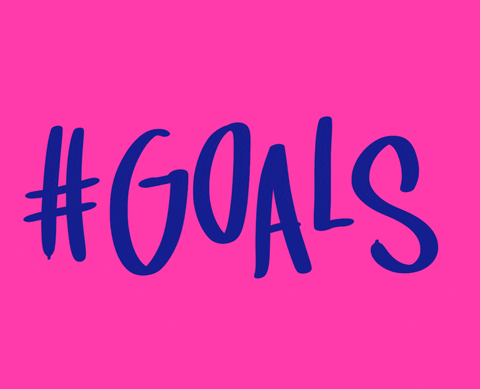First-generation students bring unique skill sets to their campus communities, not the least of which are strong problem-solving skills, self-reliance, and resiliency.
Because they are the first in their family — and, oftentimes, the first in their social circle — to go to college, they lack cultural capital.
Mentoring a first-gen student one-on-one is a great way to share this college knowledge. However, it only serves the one or two students you mentor directly.
Without a dedicated student support office or even a professional charged with supporting first-gens, how can you reach more students? If you are coming from a small or midsize institution, it’s likely that these resources are not at your disposal. So, one grassroots way to meet this need is to form a first-gen committee.
If you are considering such a venture, below are some tips to get you started.
1. Gain senior leadership support
A great (and often necessary) place to start with your grassroots efforts is in connecting with your direct supervisor. Tell them about the need you’ve observed and your ideas for working to support it.
Because this is likely not part of your job description, you will need to convince them of the value for your students. You might consider sharing that nationally one in three college students are first-gen, and, yet, these students are twice as likely not to graduate.
Once your supervisor is on board, reach out to your divisional leadership team (or ask them to reach out for you) to ask that the team convene a workgroup or allow you to do so.

2. Seek broad membership
In short, invite everyone.
Seek out administrators from other offices throughout campus, along with interested faculty, administrative support staff, and first-gen students. The more representatives of various parts of campus there are on your committee, the more resources and knowledge you will have at your disposal. In my experience, collaborators from career services, academic advising, and parents & family programs have been particularly helpful with creating and sharing resources with first-gen students and their families.
First-gen students seek mentorship from those whom they are comfortable with, and those individuals often include custodians, facilities employees, and food service staff. While it may be harder for such staff to get approval to participate in meetings, they can nonetheless be included and invited to events, sought out for advice, and celebrated through both active and passive programming efforts.
3. Brainstorm all that can be done, then condense down to goals
People will likely join your committee because they see a need and are passionate about filling it. Many may have been first-gen students themselves. However, don’t discount the value that continuing-generation allies can bring to your group.
One great way to harness all of this energy is to generate all the ideas the group has into a spreadsheet. From easy-to-accomplish goals to big dreams, it’s important to get it all out on the table. From there, begin grouping similar ideas or programs. You may find that many can be combined. The process of pairing down goals may also help give rise to more fully formed programming and policy ideas.
4. Group your goals by ease of accomplishment
Once you have begun pairing down your list to similar and overlapping goals, you should have between 10 and 20 goals, ranging from low-hanging fruit on up to wild dreams that you do not currently have the resources for.
Arrange these into three groups:
- things you can accomplish relatively easily and quickly with the shared resources available
- mid-range goals that you can imagine accomplishing eventually, but will take more time and resources
- ambitious goals you have that you don’t know how you will achieve
Share this list with your leadership, and get their approval to begin. Ask senior leadership to garner institutional support, if necessary.

5. Define “first-gen”
As part of seeking support, you will likely need to determine what your institution’s definition of a first-generation student is. This term has definitions that range anywhere from a student without any parent who has attempted any sort of post-high-school education, all the way up to not having a parent who has earned a bachelor’s degree in the United States.
Sometimes this definition may only be known to admissions or institutional research. If there is no official definition, ask your senior leadership which definition they prefer or suggest one yourself.
One thing to keep in mind when considering this is who you actually want to serve. Most administrators would want to serve the most number of students possible, and so in that case, the broadest definition would work best. The latter definition would include any student who is first in their family to go to college as well as most international students.
6. Exercise an open mind when considering campus programming partners
Although your committee membership may represent only a handful of offices or academic areas, consider broadening your scope to find interested collaborators throughout your division and across the institution. Consider reaching out to professionals within institutional advancement, alumni affairs, and financial aid, as they are responsible for funding first-gen students and the implications of their financial decision-making.
First-year programs may also be a natural partner and may be interested in collaborating on the creation of programming, course clusters, or even a living-learning community. The office of multicultural affairs may be great for program collaboration, as students holding multiple identities will hopefully feel drawn to this office. Be creative in considering which offices to reach out to.
One of my most surprisingly fruitful collaborations was with the campus museum. Motivated by a quote I read about first-gens not having been exposed to art (because it’s seen as frivolous), and remembering my own discovery of art in college, I reached out to the museum’s director. She was thrilled to work with us. She designed a temporary art installation in our First Gen LLC house, participated as a guest chef in a first-gen family dinner, and hosted a first-gen event at the museum teaching students how to engage with art.
While the idea of putting on programming when you don’t yet have a budget can be daunting, keep in mind that you can obtain funding from your own office, as well as from all your willing new collaborators across campus.
7. But also, ask for a budget

Look at your list of goals to determine what type of events and associated budgetary funds you will need to accomplish the ones that are not policy-based.
Work up a rough budget. Then pad this amount and ask for more than you think you will need. You might get it. Or you might get less, which is what you actually need. Because budgets are constrained, you may get nothing, but you are now on the radar of the decision-makers holding the purse strings.
8. Establish a social media presence and newsletter
Once you begin planning and orchestrating events, you’re going to need an audience of first-gen students. So, create a social media account for your campus’s first-gen efforts. Currently, students love Instagram. However, that could change with the wind, so let your students tell you where they’re at. Follow the accounts of all the various campus offices and relevant student organizations, and ask them to share your posts and hype your account.
Mail Chimp is a great free tool to manage a newsletter. Consider sending one out each week or two. Content can involve hyping up your own programs, providing campus resources (perhaps shared with you by members of your committee) and academic support events. You may also want to include short bits of cultural capital (such as definitions for campus lingo), as well as photos, quotes, and advice from faculty and staff who were first in their families to attend college.
To determine who to send this out to, consider asking anyone on campus who collects survey data if they have lists of first-generations students. For example, many institutions survey incoming first-year students. While such surveys may not explicitly ask students if they’re first-generation, it may ask about parent educational attainment level. Admissions may also have similar data. If these offices are willing to share, seek approval from senior leadership before sending messages to these students.
Another way to generate a mailing list is by utilizing social media to encourage student sign-ups. In non-pandemic times, you might consider having a sign-up list at your in-person tablings and events.
9. Throw all the spaghetti and see what sticks
Once you have institutional approval, get right to work on as many of the low-hanging fruit items on your list as you can. Assign specific tasks to committee members, making sure every item is included. You will want to delegate to ensure first-gen support is a team effort, not something that consistently falls solely on you.
This may include a variety of program ideas. Some will work, and some will not, even if you have seen them be successful at other institutions. But keep trying! Your students will notice your efforts.
As you figure out what works, you may find yourself developing tradition-based programs or program series. Let your programmatic success guide your efforts. When a program fails, determine if it was not of interest to your students, or if it needs to be repackaged in a way that will better draw their attention and attendance.
Don’t wait to accomplish all your low-level goals before beginning to work on your mid-range ones. Talk to your supervisor and senior leadership; seek their advice regarding how your committee will tackle these goals. They may have insights or resources that you’re not aware of. It also can’t hurt to hype up your work so they are aware of the successes.
10. Evaluate and regroup after each year
Once you determine what’s working well and what isn’t, you’ll hopefully find yourself in a good groove or a bad rut. Maybe you accomplished relatively few of your goals, and you’re complacent. Maybe you accomplished all of them and you are taking a second to relax. Take that well-deserved relaxation time, but at the one-year mark, convene the committee and evaluate the past year’s efforts.
Your committee members might have different perspectives from you. You may also have new members with exciting new ideas about goals they wish to accomplish. Evaluating annually will keep your efforts fresh, helping the entire committee focus not just on what’s working well but also on what more you can accomplish together. And once you’ve completed your goals, write new ones.

Make no mistake; starting a first-gen committee requires a lot of work. However, the rewards for students can be huge. The best programs occur when a broad range of colleagues bring their multiple perspectives to an effort to support students. Taking the initiative to get the ball rolling on such a committee is a great way to enrich your students while also providing you with the satisfaction of meaningful and impactful work.
Have you formed or been part of a first-gen committee? We’d love to hear about your success! Connect with us on Twitter @themoderncampus and @Russcular.





